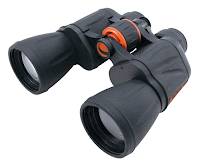Last Saturday, in one of our classes, our professor was narrating an experience he had when he was teaching in New Era. He asked in his class, "why do we have a moon?" and a student angrily replied "because God put it there, is there any other reason?!" As a religious individual and a man of science, I have to say the reply was over-board and close minded. However,I'm not going to discuss how a lack of understanding of science and faith can cause a gap between the two. On the other hand, it crossed my mind the following night on how our professor could have dealt with it without clashing ideas with a close minded individual.
In my mind our professor could have answered, "yes I agree, however God makes everything happen for a reason, so, what do you think is the reason why we have a moon?" This way, you can hurl back the question to get on with the topic and at the same time avoid the argument (certainly the student can't refute that God has a purpose for everything).
So why do we have a moon?
In a scientific point of view, life as we know it might not have existed without the moon. We probably wouldn't recognize the Earth if it existed without a moon. The first important contribution of the moon to Earth happened during the formation of the moon. When the Earth was forming a planetesimal (proto-planet) the size of Mars, known as Thea, collided with Earth. during the collision, part of Thea's iron core merged with the Earth making it more massive than it was. The impact debris later coallesed to form the moon. This theory of moon formation became known as the giant impactor theory or the 'big splat'. Because the Earth gained more mass, it is much suitable to maintain internal heat which contributed to the formation of Earth's magnetic field - our sheild against harmful UV radiation of the sun. Without our magnetic field, Earth's atmosphere might have been stripped away by the Sun a long time ago.
Professor of Astronomy and Physics, Neil Commins, in his book "What if the Moon Didn't Exist?" narrated the hellish world the Earth was before the collision:
Throughout the millions of years before the planetesimal struck, storms swirled ceaselessly on the moonless earth. Lightning lit the barren landscape, while the air reverberated with deafening thunder claps. volcanoes emitted rivers of lava and clouds of gas and dust. earthquakes shook the earth's surface as the magma (molten rock) in its interior clawed at the bottom of the planet's thin crust. At that time the earth was bone-dry. Any water on its surface was immediately vaporized by the heat stored in the rocks, making the planet utterly inhospitable and lifeless.
Another benefit we experience out of the moon's presence has to do with gravity. The gravitational force between the moon and the Earth is most evident in the tides. These tides also slow down the Earth's rotation. The slower rotation rate has been essential in shaping the life cycles of all plants and animals. The tides also dictate the reproductive process of many marine life. Should the Earth rotate faster,storms on the planet would be more powerful and more frequent. Because of the strong winds, existing plantlife woul need to stay low on the ground and securely cling to the rocks. Leaves would need greater structural connections. Phototropism would also be in jeopardy if the Earth spinned too fast. Majority of plant life turn their leaves toward the sun in order to maximixe the gathering of energy - this would be difficult in a rapidly spinning Earth.
Our stable axis of rotation is also a result of the tidal forces between the Earth and the moon. Without it, we wouldn't have the stable seasons and the planet will experience sudden massive climate shifts as a result of the shifting of our axis. This means deserts will suddenly be frozen lands and vice versa. These rapid changes in climate will seriously hinder the evolution of life.
There are many more contributions the moon plays to the existence of life on Earth (discussing all would make this article too long). The above mentioned are only a few. Putting them all into consideration, you could answer the earlier question with "God gave us a moon so that we can have life."














